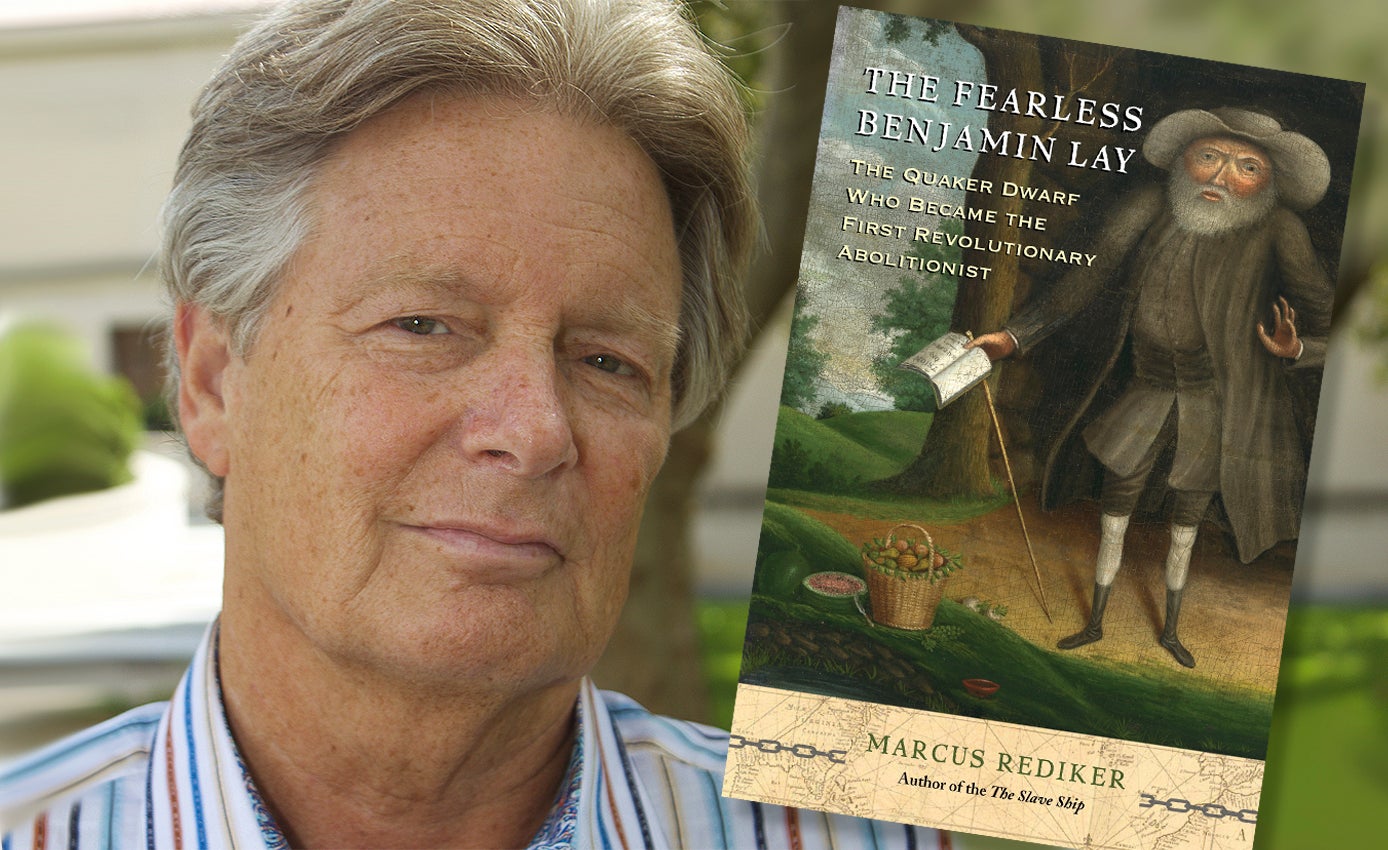
Subscribe to Pittwire Today
Get the most interesting and important stories from the University of Pittsburgh.Historian's Work Celebrates Unsung Heroes
Benjamin Lay grew all of his own food. He championed animal rights. He opposed the death penalty. He lived in a cave with a big library. He stood barely four feet tall and had kyphosis, the over-curvature of the thoracic vertebrae.
As early as 1718, the Quaker was one of the first people to demand the abolition of slavery, some 70 years before the abolitionist movement even began.
He was a man ahead of his time.
Marcus Rediker, the University of Pittsburgh’s Distinguished Professor of Atlantic History, first stumbled upon this amazing man while conducting research for an earlier book.
“Lay was a unique figure,” said Rediker. “It took courage to stand for his ideas almost 300 years ago. And yet in our day, Lay is almost completely unknown. I felt he was someone we needed to remember and honor.”
And so came “The Fearless Benjamin Lay: The Quaker Dwarf Who Became the First Revolutionary Abolitionist.”
Released in September, it’s the latest book by Rediker, who has described the role slave ships played in shaping race in America in “The Slave Ship: A Human History”; presented the Africans’ perspective of the 1839 rebellion against a Spanish slave ship in “The Amistad Rebellion”; and turned maritime history upside down in “Outlaws of the Atlantic.”
Rediker said he enjoys exploring American history from the “bottom up.” Based on the Kentucky native’s experiences in the segregated South, he focuses on the forgotten or ignored — from the perspective of the sailor, the slave, the servant.
It’s no wonder Lay caught the professor’s attention.
Lay had gone to sea as a sailor. There, said Rediker, he learned the ethic of solidarity. Sailors had a way of depending on one another, and Lay transferred that ethic to enslaved people.
In a world of profound inequality, [Benjamin Lay] was absolutely committed to the idea that all human beings are equal. And I do mean all: peoples of all cultures, men and women, black and white, rich and poor.
Marcus Rediker, Distinguished Professor of Atlantic History
He was the first person to boycott products made by slaves. He did not consume sugar or tobacco and spent hours with a spindle creating his own drab garments out of flax fibers to avoid the practice of shearing sheep for wool. He and his wife, Sarah, also fed the hungry, organizing meals in Barbados for enslaved Africans.
Many wealthy Quakers living in Pennsylvania were slave owners. When Lay spoke out at meetings against slavery, he did so with dramatic flair — whether that meant pulling out a mallet and smashing china cups and saucers or splattering fake blood — actually, bright red pokeberry juice — onto the heads and bodies of those who owned slaves.
“I loved his pure radical spirit,” said Rediker. “In a world of profound inequality, he was absolutely committed to the idea that all human beings are equal. And I do mean all: peoples of all cultures, men and women, black and white, rich and poor.”
Lay’s antics at meetings would prompt people in the crowd to literally pick up the small man and toss him out the door. Lay was disowned by his fellow Quakers for speaking out against slavery. But slowly and methodically, he began to change minds. The Quakers eventually became the first group in modern history to renounce slave holding.
A recent opinion piece by Rediker in The New York Times has created quite a buzz about Benjamin Lay. Afterward, two people wrote to Rediker claiming they may have found the man’s cave in Abington, Pennsylvania, north of Philadelphia. And six film producers called — two considering documentaries and four proposing feature films.
Rediker says he’s been weaving Lay’s story into his teachings and lectures for years, and students are always enthralled to hear about him.
“If, as a historian, I tell vivid dramatic stories about humankind and its many challenges, the students will care,” he said. “And Lay deserves a proud place in our history.”


